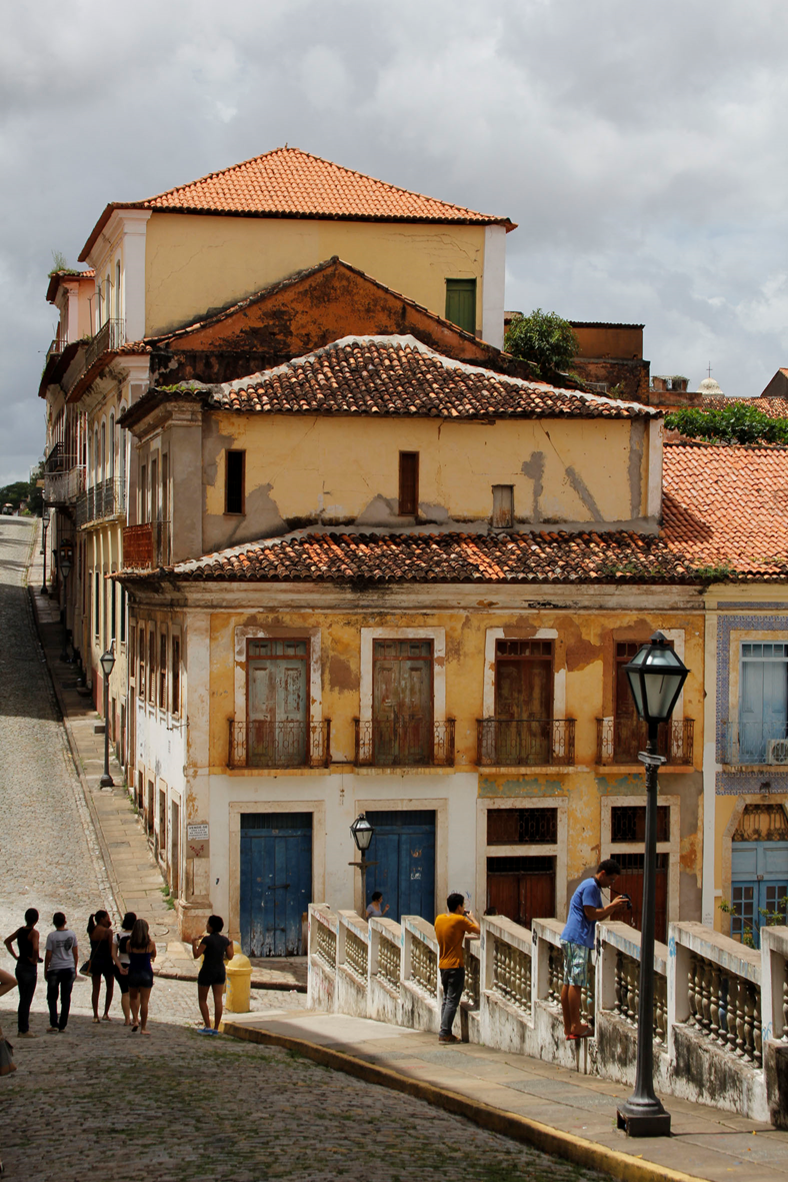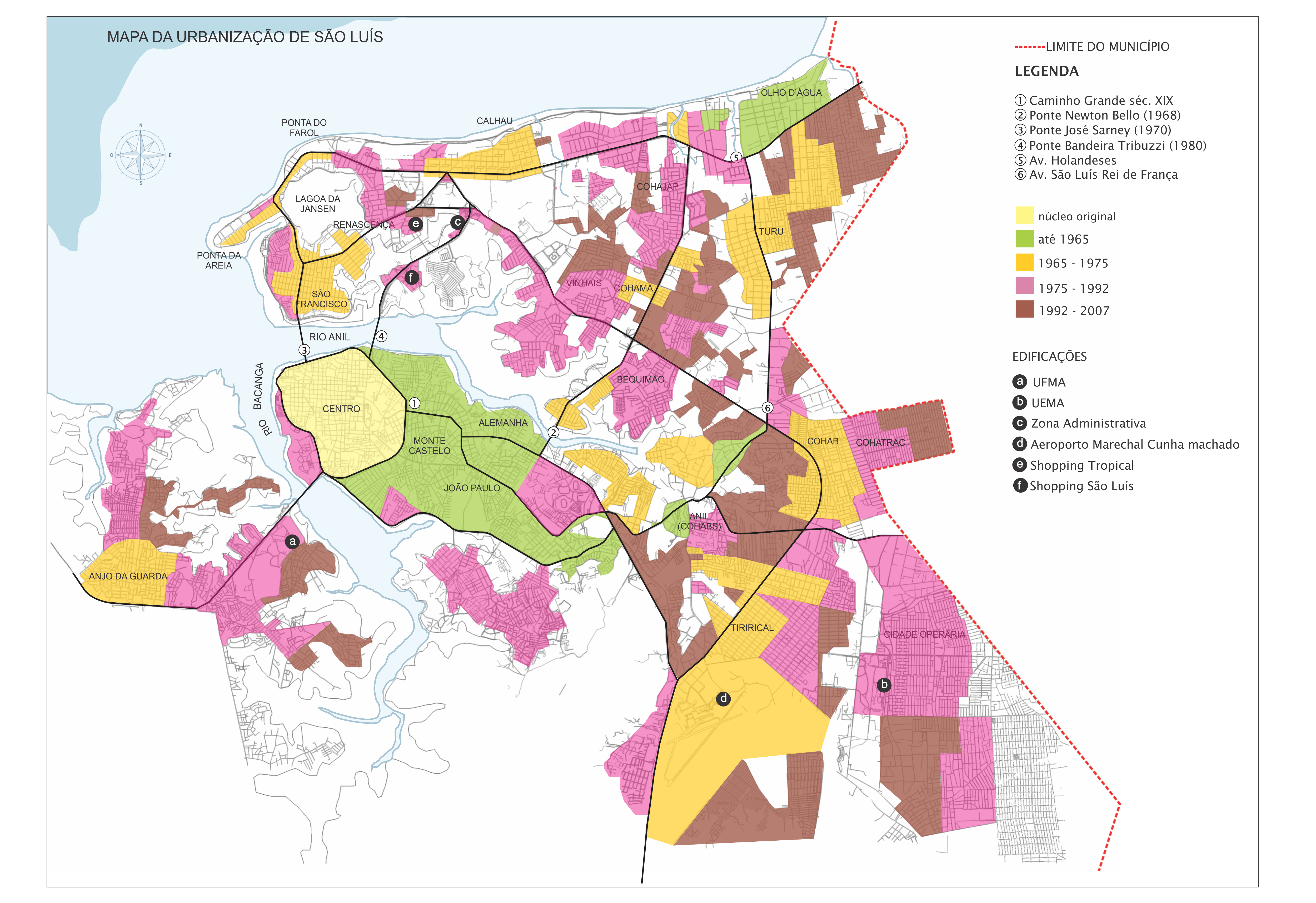parks creativity news urban theory immigration economics social capital scenarios superplaces historic centers open position progetto urbano globalization architecture inu summer schools urbanization call for articles smart city city-regions safety & security maps spatial planning European policies Communication
THE DISPERSED CITY IN BRAZIL. THE CASE OF SÃO LUÍS, MARANHÃO
Marluce Wall
![]() Portuguese Version
Portuguese Version![]() Italian Version
Italian Version
The present study focuses in the urban expansion of a North-Eastern city in Brazil, during the Seventies. This process arises issues about continuity and discontinuity in the development of São Luís urban form. Since then, these two logics, the logic of making the compact city and the logic of building the horizontal and dispersed city, are currently coexisting in contemporary São Luís. The historic city center has proudly assumed the status of World Heritage City (Unesco). At the same time, the dispersed city is evolving into a very segregated urban space, developing new residential enclaves, enclosed communities, which are isolated and firmly secured by walls and electric fences.
The city, born in 1612, maintained its original 17th century structure of regular blocks in a reticular grid, a pattern that created a compact and continuous urban fabric. 
This logic prevailed until the process of modernization happened in the Seventies, which originated the city sprawl across undeveloped lands, creating large areas dedicated to the production of housing, and the industrial areas and harbors. Since then, the logic of production of urban space has been oriented and dominated by a net-work of modern high-speed ways, with the new neighborhoods diffusely distributed along this extensive road network. Since this moment, the urban expansion adopted the pattern of a dispersed city.

REFERENCES
• Burnett C.F.L., Além do Rio Anil. Urbanização e desenvolvimento sustentável: a sustentabilidade dos tipos de urbanização em São Luís do Maranhão, Universidade Estadual do Maranhão, Uema, São Luís, 2008.
• Fishman R., Bourgeois utopias. The rise and fall of suburbia, Basic Books, Lexington, 1987.
• Lefebvre H., The production of space, Blackwell, Massachusetts, 1998; ed. VIII.
• Mesquita R.R., Plano de expansão da cidade de São Luís, São Luís, 1958.
• Reis Filho N.G., Notas sobre urbanização dispersa e novas formas de tecido urbano, Via das Artes, São Paulo, 2006.
• Ribeiro Junior J.R.B., Formação do espaço urbano de São Luís: 1612-1991, Edições Func, São Luís , 1999.
• Secchi B., Primeira lição de urbanismo, Perspectiva, São Paulo, 2006.
• Secchi B., A cidade do século XX, Perspectiva, São Paulo, 2010.
• Villaça F., Espaço intra-urbano do Brasil, Studio Nobel, Fapesp, Lincoln Institute, São Paulo, 1998.
Marluce Wall, obtained a PhD in Urbanism at the Federal University of Rio de Janeiro (PROURB-FAU / UFRJ), master in Urban development at the Federal University of Per- nambuco (MDU / UFPE) and bachelor in Architecture and Urban planning at the Federal University of Rio de Janeiro. She is currently professor at the State University of Maranhão (UEMA), where she holds the position of Director of the Architecture and Urbanism Course. She has been participating in the Coordination and Pedagogical Commission of the Equinox ur- ban design workshop. She has been working mainly on the following themes: collaborative design, urban habitats and socio-spatial diversity, urban conservation, planning theories and history of the city and urban planning.
A WINDOW ON BRAZILIAN CITIES
Regular column of Planum. The Journal of Urbanism | www.planum.net
CREDITS
• Marco Mareggi | Editor of the column
• Luca Lazzarini | English text reviewer
• Talita Amaral Medina | Portuguese text reviewer
• Cecilia Saibene | Layout
To send proposals of articles and contributions to the regular column, write to:
Marco Mareggi: marco.mareggi@polimi.it
Planum Editorial Staff: planum.magazine@gmail.com




Planum
The Journal of Urbanism
ISSN 1723-0993
owned by
Istituto Nazionale di Urbanistica
published by
Planum Association
ISSN 1723-0993 | Registered at Court of Rome 4/12/2001, num. 514/2001
Web site realized by ChannelWeb & Planum Association | Powered by BEdita 3









